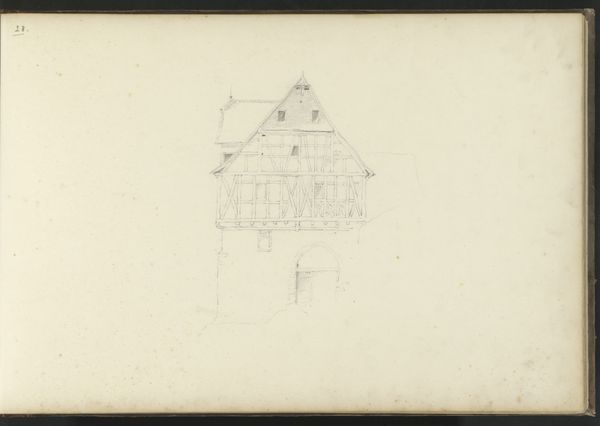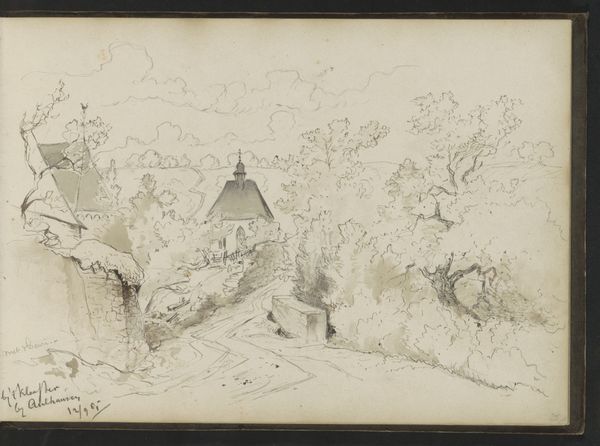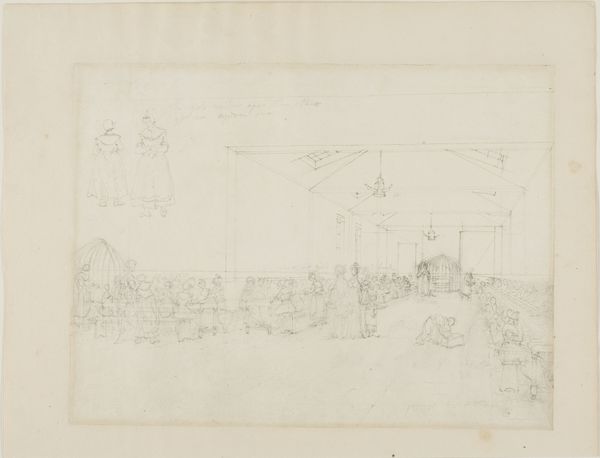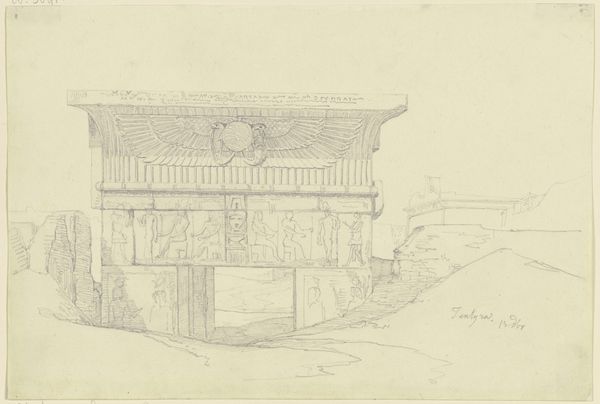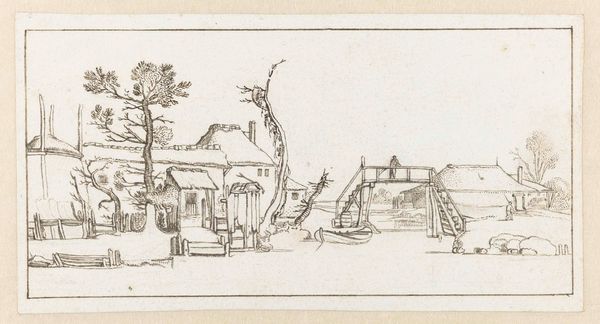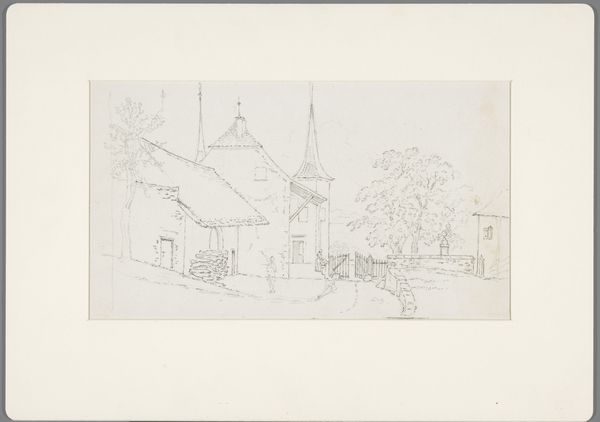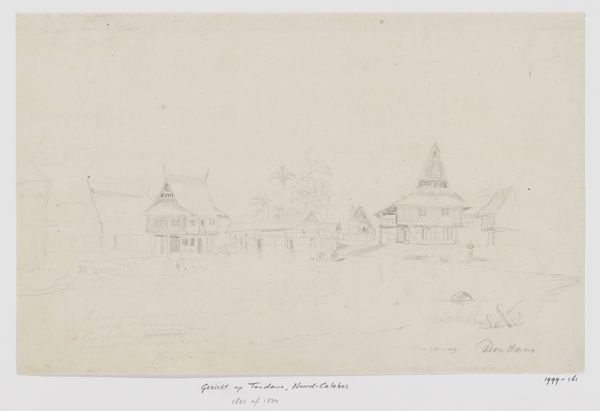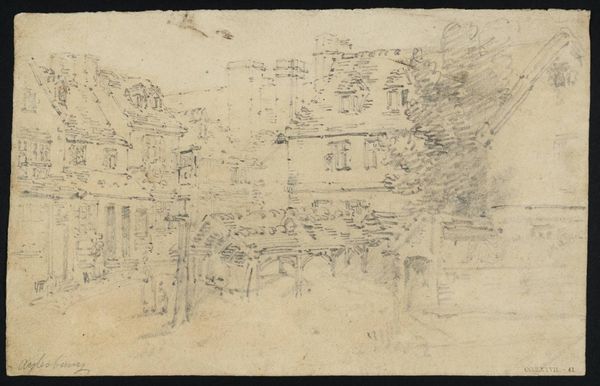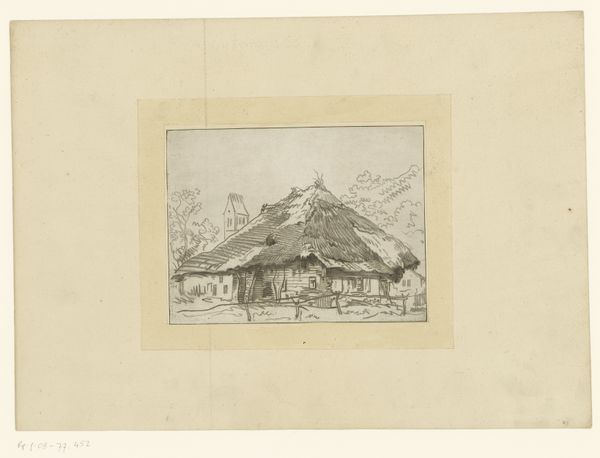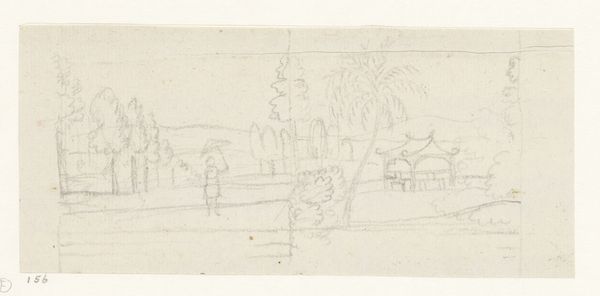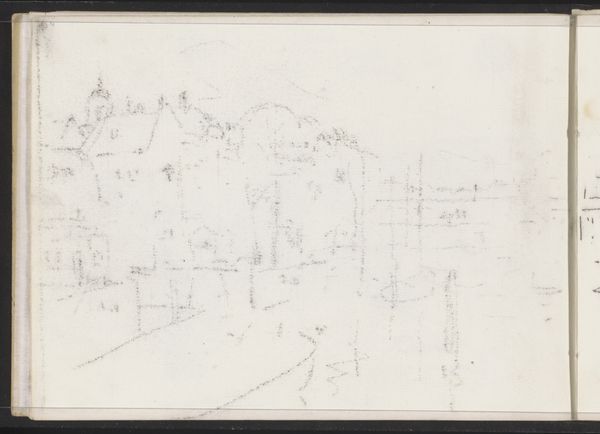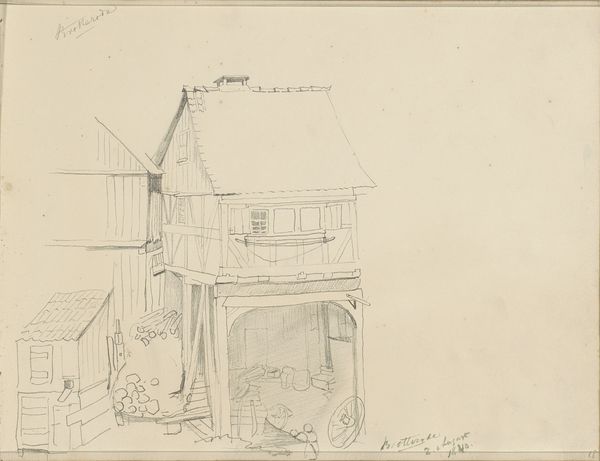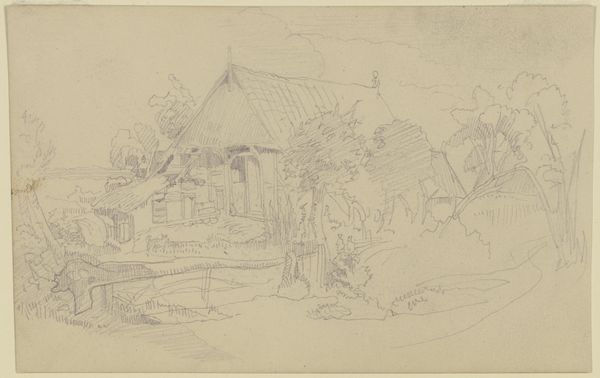
drawing, pencil
#
drawing
#
neoclacissism
#
aged paper
#
pale palette
#
flat design on paper
#
light coloured
#
sketch book
#
landscape
#
form
#
personal sketchbook
#
romanticism
#
pencil
#
line
#
sketchbook drawing
#
cityscape
#
storyboard and sketchbook work
#
sketchbook art
#
design on paper
#
realism
Dimensions: height 400 mm, width 320 mm
Copyright: Rijks Museum: Open Domain
This pencil drawing depicts ‘Het huis Peking te Baarn’, by David-Pierre Giottino Humbert de Superville. The oriental pagoda roof is a symbol of the fascination with the East that swept through Europe in the 18th and 19th centuries. The pagoda motif, with its tiered roofs and upward-curving eaves, has its origins in ancient stupas, sacred burial mounds of India. As Buddhism spread eastwards, these stupas transformed into the towering pagodas we see across Asia. The oriental pagoda, transplanted here in the Netherlands, far from its original sacred context, reveals how symbols migrate across cultures, adapting and evolving with each new interpretation. This is how collective memory functions – not as a linear progression, but as a spiral, with motifs resurfacing, transformed, and imbued with new meaning. The yearning for the exotic, the subconscious desire to connect with distant lands, a deep, and almost spiritual, longing for something beyond the known.
Comments
No comments
Be the first to comment and join the conversation on the ultimate creative platform.
